-
Spotlight on Workplace Eye Wellness Month
How often do you think about eye care ? It’s possible that this topic may rank low on your health priority list—after all, you probably only visit an eye doctor in Chicago when you need a new prescription for your contact lenses. However, your sight is critically important in living your everyday life. This month, remember to care for your eyes in every aspect of your life, including your time at the workplace.
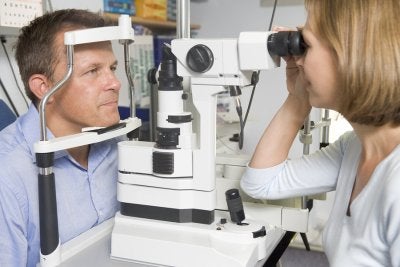
Eye Protection in the Workplace
One of the easiest things you can do to prevent eye injuries in the workplace is to wear eye protection, even if you think you’ll be fine without it. Many eye injuries in the workplace are caused by chemical splashes or small particle abrasion, including small pieces of flying metal or wood. Not only could such an injury require eye surgery, or worse, cost you your eyesight, it could also be incredibly expensive. According to the United States Department of Labor, work-related eye injuries have a price tag of over $300 million per year resulting from lost production time, medical expenditures, and compensation for employees. Finally, if you’re a healthcare worker, it’s important to remember that proper eye protection can prevent infectious diseases from being transferred through the membrane of the eye.
Eye Strain Prevention
If you work in an office setting, there are still some eye care factors that you need to consider. Overexposing your eyes to computer, tablet, and smartphone screens can cause eye strain, headaches, and lower your productivity. The main reason for this is that when people focus on digital screen devices, they tend to blink less than normal, causing the eyes to become dry and strained. You can prevent the symptoms of eye strain by remembering to blink frequently. If you feel your eyes need additional moisture, use artificial tears or an air humidifier. In addition, be sure your eyes are not too close to the computer screen. Keeping it about two feet (or more) away from your eyes should also help in reducing eye strain. Lastly, take frequent breaks to allow your eyes to adjust and refocus.
-
Kids’ Eyes and Screen Time
If you’re looking for eye glasses near Chicago for your child, you may be wondering if computer and television screen time have contributed to his or her nearsightedness. While you’re not alone in this question, there is not a lot of firm medical evidence indicating that screen time causes nearsightedness or eye problems in children. However, there is some speculative evidence suggesting a correlation between time spent reading up close and nearsightedness.
Watch this video from the American Academy of Ophthalmology to listen to an eye doctor speak about screen time and kids’ eyes. According to this optician, the best thing you can do is to encourage your children to interact with people and the outside environment rather than spending their time behind a screen. Not only will this benefit their eye care, it will also encourage socialization and discourage a sedentary lifestyle.
-
The Cataract Surgery Process
Cataract surgery is a safe and straightforward process that will improve your vision and help you lead a normal lifestyle. Cataracts cause the eye lenses to become cloudy, preventing light from reaching the eye, and hindering normal vision. Cataracts usually occur in older adults, and they are especially common in those with diabetes. Fortunately, your ophthalmologist in Chicago can reverse this condition and improve your vision with cataract surgery.
The cataract surgery process begins with an evaluation by your eye doctor. He or she will perform several tests to see how severe your cataracts are. Then, the optician will explain the cataract treatment process to you, along with its risks.
With your consent, the eye doctor will begin the surgery by giving you a local anesthetic. He or she will break up your clouded lens using sensitive ultrasound vibrations and remove it using suction. Finally, the doctor will replace the old lens with a new, artificial one. Upon your request, this new lens can be modified to give you better vision than you’ve ever had before.
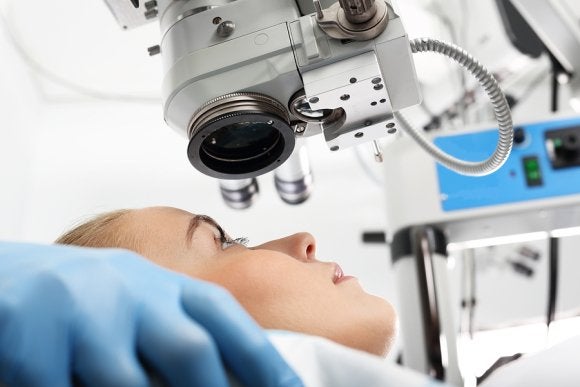
-
Relieving Computer Eye Strain
Looking for an optician in Chicago to relieve your computer eye strain? Computer eye strain is becoming a common problem, as technology has found its way into our personal and professional lives. Fortunately, there are some measures your eye doctor may recommend to prevent eye strain while using the computer.
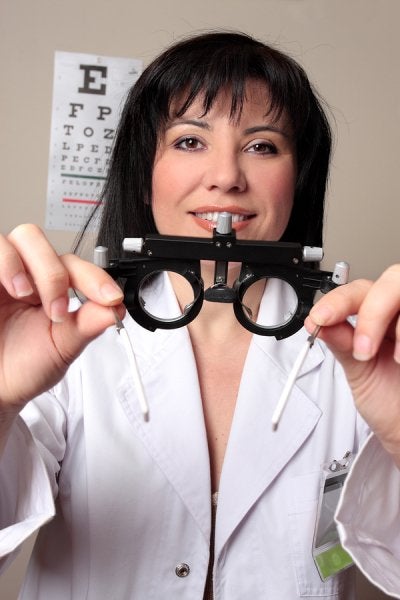
1. Have your eyes examined.
In order to prevent or treat vision problems, the first and most important thing you should do is visit your ophthalmologist for a yearly eye exam. He or she will be able to notify you of any current problems and test your eyes at a specific working distance. That way, you’ll have a better idea of how to prevent future eye strain.
2. Get an upgrade.
Is your computer basically a retro novelty item? It might be time for an upgrade. Flat screen LCD displays, such as those you see on modern laptops, are so much easier on the eyes than old tube-style monitors because they have a higher resolution and don’t cause images to flicker. If possible, go ahead and choose a large display—doing so will make computer time a more comfortable experience for your eyes.
3. Ask for computer eye glasses.
Your local optical center can provide you with a special prescription for computer eye glasses. This is a great choice for those whose current eyewear is uncomfortable after an extended time behind the screen. For example, those who wear contact lenses may often note that they become dry and irritating after computer work. In addition, bifocals or progressive lenses are not optimal for computer usage; computer glasses may be a better choice during screen time.
4. Take mini-breaks.
It’s important to give your eyes—and your neck, back, and shoulders—several breaks throughout the workday if you spend most of your time at the computer. There’s no need to worry that doing so will cause you to lose focus. Mini-breaks should actually increase your productivity and improve how you feel while you’re working. In addition, they reduce the risk that your eyes will “lock up” after prolonged digital screen usage.
-
How Do Intraocular Lenses Work?
 Intraocular lenses (IOLs), or intraocular implants, are lenses that an ophthalmologist near Chicago can implant in a person’s eyes. Patients with cataracts may be good candidates for IOLs. During cataract surgery , the ophthalmologist removes the cloudy lens of the affected eye and replaces it with the artificial lens to restore proper vision.
Intraocular lenses (IOLs), or intraocular implants, are lenses that an ophthalmologist near Chicago can implant in a person’s eyes. Patients with cataracts may be good candidates for IOLs. During cataract surgery , the ophthalmologist removes the cloudy lens of the affected eye and replaces it with the artificial lens to restore proper vision.Function of IOLs
Cataracts are areas of the eye’s natural lens that become cloudy and obscure vision. They are quite common among older adults. Since a cataract is not a growth that can be removed, it is necessary to remove the entire lens of the eye. The artificial IOLs that are inserted in place of the natural lens work in the same way. Light enters the eye through the cornea. The lens focuses the light on the retina, which allows the optic nerve to carry the images to the brain. Unlike the eye’s natural lens; however, IOLs are customizable. Before the ophthalmologist performs the eye surgery, he or she determines the appropriate prescription of IOL for the individual patient.
Candidates for IOLs
Only an ophthalmologist can determine if someone is a good candidate for cataract surgery. Since cataracts can develop for many years without causing any symptoms, most people will not necessarily have to have the surgery right away. Generally, cataract surgery may be recommended for patients who are over the age of 40 and who are experiencing poor night vision, sensitivity to light, blurry vision, or other visual disturbances.
Procedure for IOL Placement
About a week before the surgery is scheduled, the ophthalmologist will perform a non-invasive test to measure the size and shape of the eye. He or she uses this information to select the right IOL for the patient. The patient may be asked to stop taking certain medications for a week prior to the procedure. Antibiotic eye drops may also be applied for a few days to reduce the chances of an infection. The surgery itself typically takes an hour or less to perform. The ophthalmologist will place eye drops to dilate the eyes and then apply a local anesthetic. Then, the ophthalmologist can remove the cloudy lens using an ultrasound probe to break it up. Finally, the eye doctor places the IOL into the lens capsule.
-
Spotting the Symptoms of Pink Eye
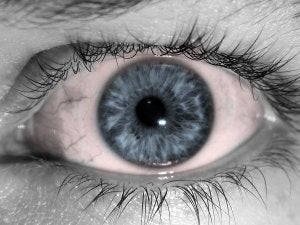 Pink eye is a contagious eye infection that is usually not a cause for alarm. However, since there are other eye infections that may lead to permanent vision loss, it’s always advisable for patients to consult an eye doctor in Chicago right away if any unusual symptoms develop. An optician may diagnose a patient with pink eye, also known as conjunctivitis, if he or she develops watery, itchy eyes along with redness in the whites of the eyes. Patients may also have swollen eyelids, thick discharge, and excessive tearing. Additionally, patients might inform the ophthalmologist that they suffer from tenderness and swelling of the areas just in front of the ears.
Pink eye is a contagious eye infection that is usually not a cause for alarm. However, since there are other eye infections that may lead to permanent vision loss, it’s always advisable for patients to consult an eye doctor in Chicago right away if any unusual symptoms develop. An optician may diagnose a patient with pink eye, also known as conjunctivitis, if he or she develops watery, itchy eyes along with redness in the whites of the eyes. Patients may also have swollen eyelids, thick discharge, and excessive tearing. Additionally, patients might inform the ophthalmologist that they suffer from tenderness and swelling of the areas just in front of the ears.It usually takes about five to seven days for these symptoms to resolve. However, some patients may develop chronic symptoms. Generally, patients who wear contact lenses, have vision in just one eye, or have a suppressed immune system are at an increased risk of developing serious cases of pink eye. If the infection was caused by bacteria, the ophthalmologist may prescribe an antibiotic ointment. For bacterial or viral pink eye, one eye care strategy is to place a cold, wet washcloth over the eyes. Patient should be very careful to avoid letting anyone else come into contact with an infected washcloth.
-
Protect Your Eyes with Healthy Habits
To protect your healthy eyes, schedule an exam every year with an eye doctor. Your ophthalmologist can detect vision problems early on and provide appropriate treatments. An ophthalmologist near Chicago can also recommend healthy eye care habits to preserve your vision , some of which are outlined in this video.
This video features actress and cookbook author Deirdre Hall, who explains that age-related macular degeneration (AMD) runs in her family. She gets her eyes checked by an optician each year and eats a healthy diet filled with plenty of vibrantly colored fruits and vegetables. This video also explains why lifestyle choices that can improve your cardiovascular health are also healthy for your eyes.
-
Diagnosing and Treating Diabetic Retinopathy
 Diabetes is a serious disease that can lead to complications that affect many different parts of the body, including the eyes. This is one reason why it’s essential for patients with diabetes to schedule regular exams with an eye doctor. An ophthalmologist near Chicago can detect diabetic retinopathy when it is still in its early stages. Diabetic retinopathy is a condition that involves damage to the blood vessels of the eyes. Over time, patients may suffer from permanent vision loss.
Diabetes is a serious disease that can lead to complications that affect many different parts of the body, including the eyes. This is one reason why it’s essential for patients with diabetes to schedule regular exams with an eye doctor. An ophthalmologist near Chicago can detect diabetic retinopathy when it is still in its early stages. Diabetic retinopathy is a condition that involves damage to the blood vessels of the eyes. Over time, patients may suffer from permanent vision loss.Identifying the Symptoms
When diagnosing diabetic retinopathy, the ophthalmologist will ask the patient about his or her symptoms. Although this condition does not usually cause symptoms in its early stages, patients may eventually notice blurry vision, spots or floaters in the visual field, dark areas in the visual field, or vision loss. Over time, patients develop an increasing reliance on vision correction, such as eye glasses.
Conducting Diagnostic Exams
In addition to assessing the patient’s symptoms, the ophthalmologist will conduct a comprehensive eye exam. This includes visual acuity measurements to assess whether the central vision is affected. A refraction exam lets the ophthalmologist know if the patient’s prescription has changed. The eye doctor will measure the intraocular pressure. Additionally, the ophthalmologist will conduct a dilated eye exam to examine the structures of the eyes for abnormalities. These can include abnormal blood vessels, swelling or deposits in the retina, bleeding in the vitreous, or the growth of scar tissue and new blood vessels.
Managing Blood Sugar Levels
One of the goals of treatment for patients with diabetic retinopathy involves slowing or halting the progression of vision loss. To accomplish this, it’s necessary for patients to manage their blood sugar levels properly. A primary care physician can help patients manage their disease through prescription medications, dietary guidelines, and exercise recommendations.
Undergoing Eye Surgery
If diabetic retinopathy is already in the advanced stages, patients may require eye surgery. One option is focal laser treatments, also known as photocoagulation. This procedure involves targeting the abnormal, leaky blood vessels with a laser to seal them. Scatter laser treatments, also known as hand retinal photocoagulation, is similar; however, this procedure can shrink the abnormal blood vessels. A third option is a vitrectomy. For a vitrectomy, the ophthalmologist makes a tiny incision, through which he or she can remove accumulated blood and scar tissue.
-
Tips for Fighting Dry Eye
 Dry eye syndrome is one of the most common causes of eye discomfort. To manage your dry eye symptoms, you can visit an eye doctor or ophthalmologist for dry eye treatment in Chicago, and take some steps at home to prevent dry eyes. Here are some helpful tips for fighting dry eye symptoms this winter.
Dry eye syndrome is one of the most common causes of eye discomfort. To manage your dry eye symptoms, you can visit an eye doctor or ophthalmologist for dry eye treatment in Chicago, and take some steps at home to prevent dry eyes. Here are some helpful tips for fighting dry eye symptoms this winter.Use Eye Drops Regularly
The first and simplest line of defense against dry eyes is using eye drops regularly. Your eye doctor or ophthalmologist can recommend the best type of artificial tears for your condition. Artificial tears will keep your eyes moist, and combat other dry eye symptoms like itchiness, watery eyes, and irritated or sore eyes. You can use artificial tears as often as necessary to provide relief of dry eye symptoms. If your symptoms don’t improve, your eye doctor can prescribe a different form of dry eye treatment.
Avoid Spending Time in Dry Air
Dry air will further irritate your dry eyes, and you should avoid sitting in front of a heating or cooling vent, fan, or space heater. Heaters remove moisture from the air and exacerbate or cause dry eyes, but you can counteract this effect by using a humidifier in your home. A humidifier will replace lost moisture and make your eyes feel much more comfortable. If you don’t want to purchase a humidifier, you can place a pan of water on top of your radiator for a similar effect.
Protect Your Eyes from Wind, Cold, and Heat
Wind and excessively cold or warm weather will dry out your eyes. If you’re planning on spending more than 15 minutes outdoors, you should be sure to protect your eyes. You can wear sunglasses and a hat to prevent cold wind and sun from irritating your eyes. If you wear prescription eyeglasses, you may want to ask your eye doctor about prescription sunglasses for further UV protection. You should also protect your eyes from smoke from fires and cigarettes, as smoke will also dry out your eyes.
-
Is LASIK Right for You?
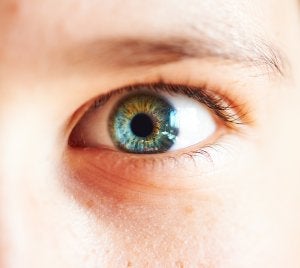 If you’re considering LASIK surgery in Chicago , you should visit an ophthalmologist with extensive experience in refractive surgery for a LASIK consultation. LASIK eye surgery can offer significant vision correction, and reduce or eliminate your need for prescription eyeglasses or contact lenses. An ophthalmologist can evaluate your vision and eye health to determine whether you are a good candidate for LASIK.
If you’re considering LASIK surgery in Chicago , you should visit an ophthalmologist with extensive experience in refractive surgery for a LASIK consultation. LASIK eye surgery can offer significant vision correction, and reduce or eliminate your need for prescription eyeglasses or contact lenses. An ophthalmologist can evaluate your vision and eye health to determine whether you are a good candidate for LASIK.The best candidates for LASIK surgery are those who are in good overall health, good eye health, and who don’t have any eye diseases or conditions. Certain eye problems can increase your risk of LASIK complications, or may prevent your eyes from healing completely. If you have poor vision that has been stable for at least one year prior to your LASIK consultation, and you are in good general health, you are a good candidate for LASIK surgery.
LASIK surgery is successful in providing vision correction for severe degrees of nearsightedness, astigmatism, and moderate degrees of farsightedness. If your level of vision correction isn’t ideal after your refractive surgery, you can undergo another LASIK procedure. LASIK surgery is minimally invasive, and the procedure takes only about 30 minutes.
